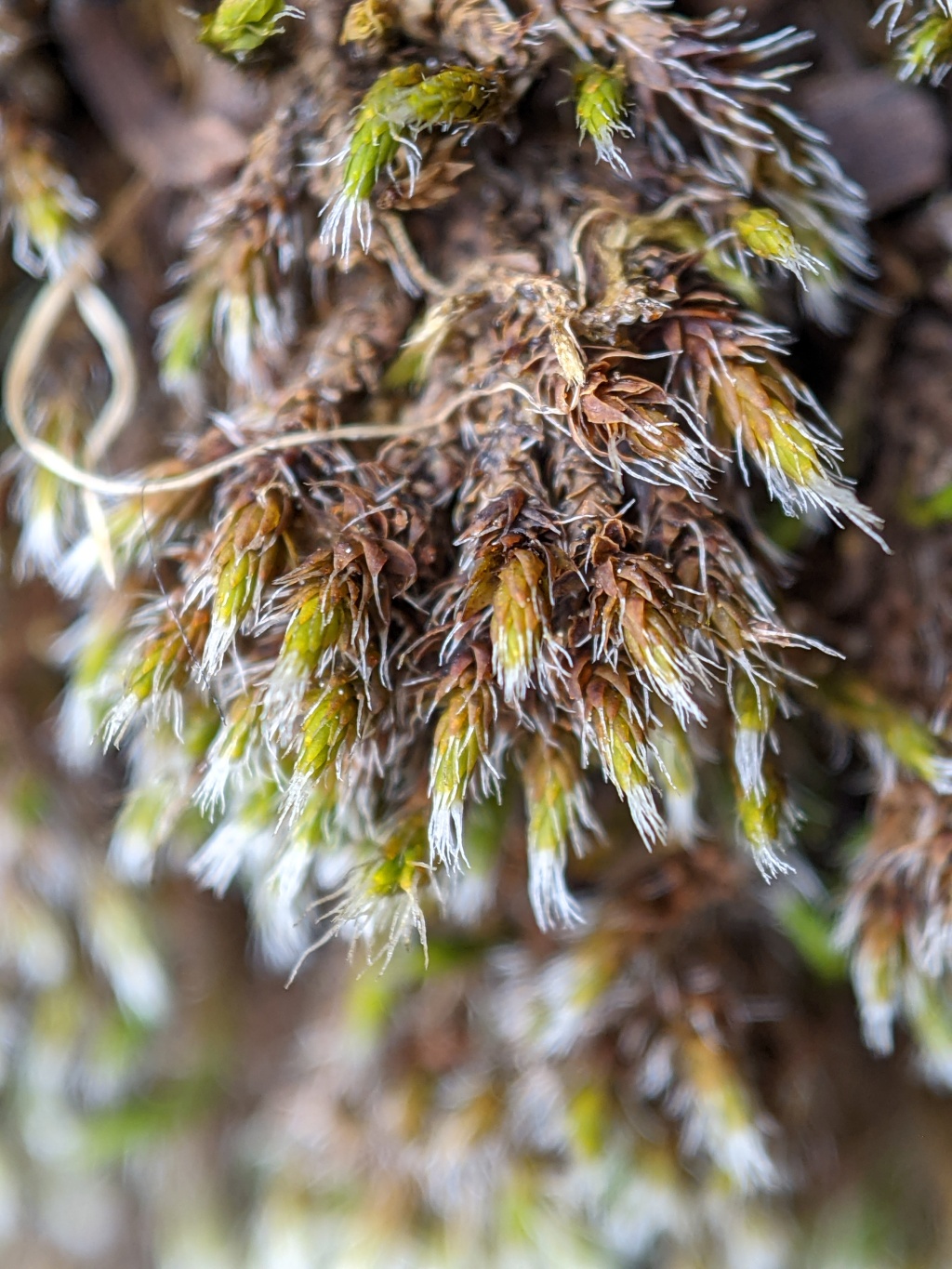Grimmia laevigata
(Brid.) Brid.Dioicous. Asexual propagules absent. Dense tufts or cushions on rocks, black and white, yellow-green at apices. Stems 0.5–2 cm long, with a central strand, light brown, with light brown rhizoids at base. Leaves spreading when moist, erect-appressed when dry, triangular or ovate to broadly ovate, 1–2 mm long, 0.4–0.6 mm wide, concave; apex obtuse to acuminate, with a dentate or rarely smooth hyaline hairpoint to 2 mm long; costa excurrent as a hairpoint; margins entire, plane, without a border; laminal cells in apical half mostly quadrate, 5–15 μm long, 5–13 μm wide, smooth, bistratose toward apex, gradually transitioning to basal laminal cells; cells near base oblate becoming rectangular near costa, 6–30 μm long, 10–30 μm wide, smooth. Setae 1–3 mm long, straight, yellowish, smooth, twisted anticlockwise. Capsules exserted, erect, oblong-ovoid to cylindric, straight, 1–1.5 mm long. Operculum short-rostrate, 0.25–0.4 mm long. Calyptra mitrate. Peristome present.
MuM, Wim, GleP, VVP, VRiv, GipP, WaP, Gold, CVU, GGr, DunT, NIS, EGL, EGU, WPro, HSF, HNF, HFE, VAlp. Widespread in areas with exposed dry rock, which excludes this species from most of the north-west and most high rainfall areas. Widespread throughout all states and territories. Temperate to tropical regions throughout the world.
 Spinning
Spinning
